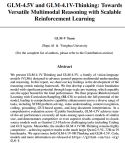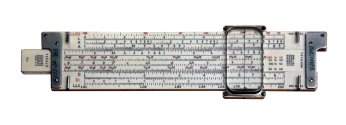New DeepSeek data format
This is something that went a bit under the radar, but IMHO is a very interesting part.
What it means?
A model parameter/weight is a number, no more no less. DeepSeek has 671B parameters, it means it works by processing input across a huge number of big tables called matrices, each one with millions of parameters / numbers.
Now, how a computer represents a number? It can use a 16 bit format like fp16 where each number is stored in 16 bits, or a fp8 where each number is stored in 8 bits.
It can store the numbers as integers like in int8 or as
floating point numbers as in fp8. Floating point it means that a number N is represented as a power of 2 multiplied by a fractional part:
N = s * m * 2^e, where e = exponent, m = mantissa, s = sign (-1 or 1)
View attachment 158942
In the picture above the orange part stores the exponent, the green the mantissa, so E4M3 it means 4 bits for the exponent and 3 for mantissa + 1 (the blue one) for the sign for a total of 8 bits -> FP8
So how is done the
UE8M0 FP8 used by DeepSeek?
It is a 8 bit floating point number with
all the 8 bits used for exponent, no mantissa. It is like you can only represent powers of 2, so for instance
exponent
1 (01) -> corresponds to 2^
1 = 2
exponent
2 (10) -> corresponds to 2^
2 = 4
exponent
3 (11) -> corresponds to 2^
3 = 8
Now suppose you want to perform a multiplication:
2 * 4 = 8
In this
UE8M0 format, 2 corresponds to exponent 1, 4 corresponds to 2 and 8 corresponds to 3. So
2 * 4 = 8 corresponds to summing the exponents 1 + 2 = 3
In this format
multiplication can be implemented with a sum, and instead of the costly hardware multiply circuit a much simpler adder circuit can be used!
The above example is not a single case, this is called
logarithmic number system and rely on the property that log(a*b) = log(a)+log(b)
Because in the models the biggest operation by far is matrix multiplication, this trick could simplify a lot the hardware.




